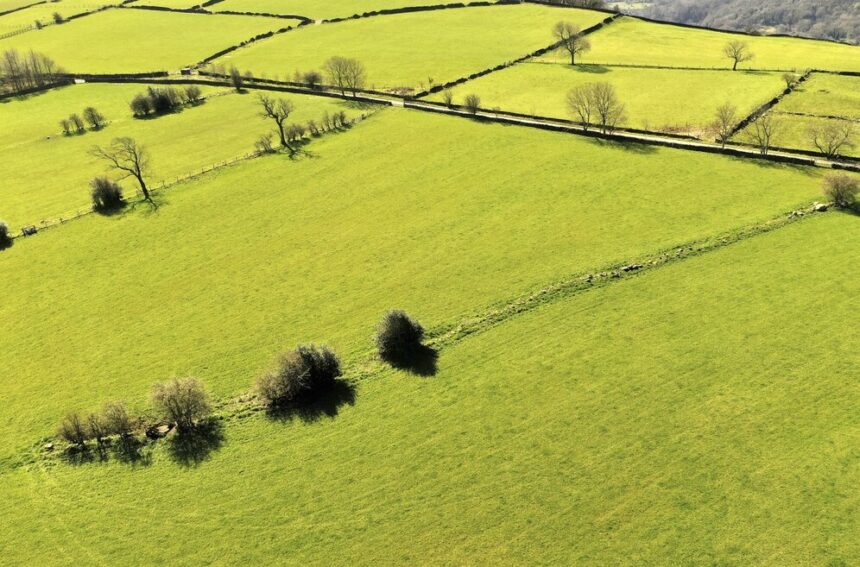Soil erosion is one of the biggest challenges faced by farmers with sloping land. On hilly or inclined terrain, rainwater runoff can easily wash away the fertile topsoil, reducing crop productivity and damaging the long-term health of the land. Fortunately, there are practical and affordable methods to prevent soil erosion and maintain a healthy, sustainable farm. Here’s a detailed guide on how to prevent soil erosion in sloping farms and protect your land for the future.
Why Soil Erosion Happens on Slopes
When land is sloped, gravity causes rainwater to flow faster downhill. This runoff gains enough force to dislodge and carry away the topsoil, especially when the ground cover is weak or disturbed. Over time, this leads to:
- Loss of soil fertility
- Poor crop yields
- Formation of gullies and exposed roots
- Silting in nearby rivers and dams
To prevent this, farmers must manage water flow and strengthen soil structure.
Effective Ways to Prevent Soil Erosion on Sloping Farms
1. Terracing
Terracing involves cutting a series of flat steps or platforms into the slope. These terraces slow down water runoff and give it time to soak into the soil, reducing erosion dramatically.
- Stone terraces are long-lasting and best for steep slopes.
- Bench terraces work well for moderate slopes and can be used with crops like maize or potatoes.
- Grass-lined terraces are suitable for small-scale farms and are easier to maintain.
2. Contour Farming
Planting along the natural contours of the land instead of up and down the slope helps reduce water runoff. The ridges formed during contour farming act like small dams, trapping water and allowing it to penetrate the soil.
- Use contour lines for planting, digging furrows, and applying fertilizer.
- Combine contour farming with cover crops for better results.
3. Plant Cover Crops
Cover crops such as legumes, grasses, or groundcovers like sweet potatoes help protect the soil from raindrop impact and runoff. Their roots hold the soil in place while improving soil structure and fertility.
- Choose fast-growing crops during the off-season to keep the soil covered.
- Leguminous cover crops also add nitrogen to the soil naturally.
4. Agroforestry and Tree Planting
Trees and shrubs with deep root systems help bind the soil and reduce erosion on slopes. Agroforestry combines crops with trees to improve land stability and provide extra income from fruit, timber, or firewood.
- Plant trees along the contours or at the bottom of slopes.
- Use species like vetiver grass, Grevillea, or calliandra which are known for erosion control.
5. Mulching
Mulching involves covering the soil with organic materials such as straw, dry leaves, grass clippings, or compost. It helps protect the soil from direct rain impact, retains moisture, and improves fertility as it decomposes.
- Apply a thick layer of mulch around crops, especially during rainy seasons.
- Organic mulch improves the structure and water-holding capacity of the soil.
6. Building Check Dams and Diversion Channels
For steeper or larger farms, small check dams or diversion trenches can help slow down water flow and redirect runoff away from vulnerable areas.
- Use rocks, logs, or brushwood to build barriers across gullies.
- Create shallow diversion ditches at the top of the slope to guide water safely away.
7. Minimum Tillage and Conservation Tillage
Excessive tillage can loosen the soil and increase erosion on slopes. Conservation tillage methods help maintain soil structure while still preparing land for planting.
- Try no-till or strip tillage where possible.
- Avoid ploughing up and down the slope.
Practical Tips for Farmers
- Start small: Implement one or two erosion control methods first and monitor their impact.
- Maintain regularly: Terraces, channels, and planted covers need occasional maintenance to stay effective.
- Get local advice: Work with agricultural extension officers to identify the best practices for your soil and climate.
Long-Term Benefits
Preventing soil erosion on sloping farms doesn’t just save your current harvest — it also improves long-term soil fertility, enhances water retention, and contributes to more resilient farming systems. With smart land management, sloped farmland can be both productive and sustainable for generations to come.







